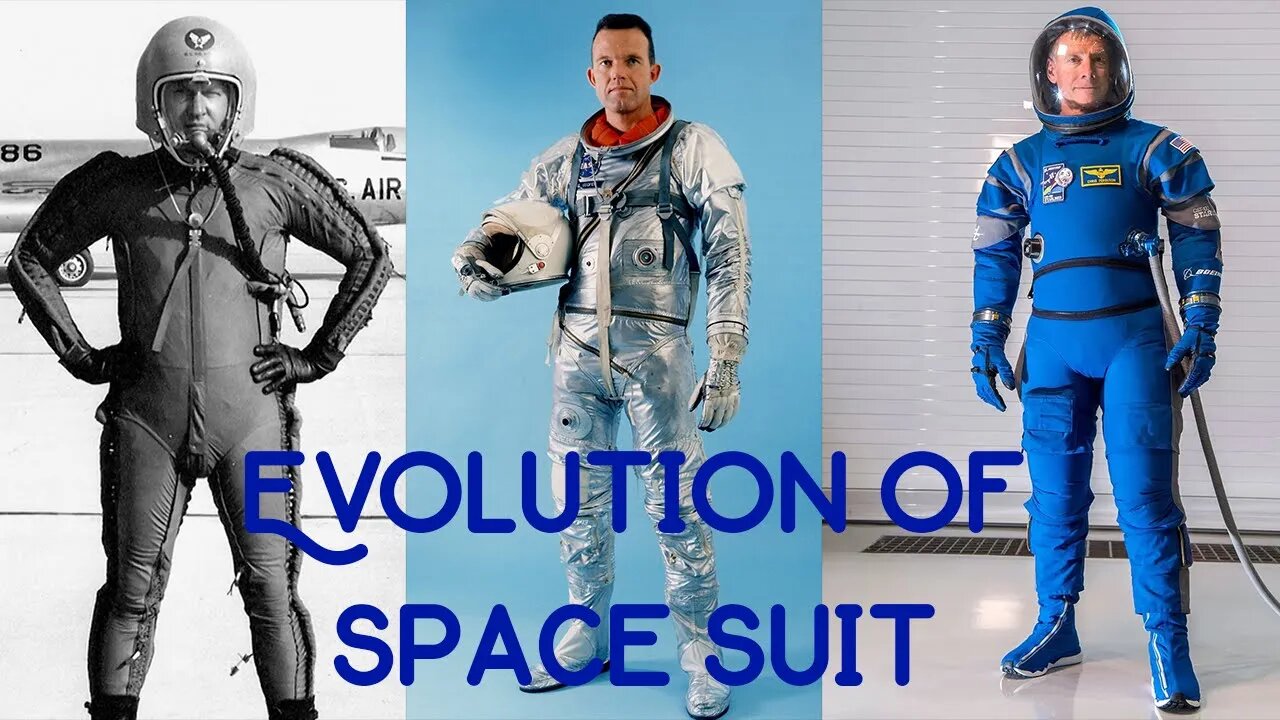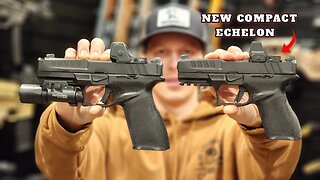Premium Only Content

An Evolution Of Spacesuits: The Suit That Made It Possible For Mankind To Venture Into Space
An Evolution Of Spacesuits
As flight developed, aviators found they had to develop pressure suits to provide oxygen when the air became too thin. The first pressure suit was patented in 1918 by Fred M. Sample. It was made from an elastic material and included an airtight bodysuit, a helmet that could be easily opened and closed, and a flexible air-supply hose connected to a source of compressed air and a pump.
The Suit That Made It Possible For Mankind To Venture Into Space
In 1934, aviator Wiley Post, the first man to fly solo around the world, had rubber manufacturer B.F. Goodrich create a rubber pressure suit that enabled him to reach 40,000 feet (12.1 km). A later version was made from latex poured over cotton clothing and had a metal helmet with a glass visor. Engineer Russell Colley later developed the XH-5 “Tomato Worm Suit” model, which had segmented joints at the knees, hips, and elbows.
Developed by the B.F. Goodrich Company in the late 1950s, the Mercury Suit (also known as the Navy Mark IV) was a modified pressure suit, based on designs used by the United States Navy. The suits were originally designed by Russell Colley for use during the Korean War. NASA's Mercury Project kicked into gear in 1958, and the need for a spacesuit to protect astronauts quickly became apparent.
The Mercury Suit: The first American spacesuit
NASA scientists noted Mark IV as a potential model, given its ability to protect pilots at high altitudes and maintain an atmosphere similar to that of Earth's. To make the design viable for space, they coated the suit with aluminum for thermal control and added a closed-loop breathing system that pumped oxygen into the suit through a tube at the waist.
The Suit That Landed On The Moon
To make the dream of walking on the Moon a reality, NASA had to create a suit that not only kept their astronauts alive in the vacuum of space but would also be lightweight while providing the flexibility and maneuverability needed for walking on the Moon. The design would have to protect its wearer from the effects of radiation, as well as protect the wearer against the tough terrain, and provide the ability to stoop down and collect rocks.
With these concerns in mind, NASA developed what they referred to as EMUs — extravehicular mobility units, which have become colloquially known as the Apollo or Skylab suit.
The suit featured the famous fishbowl helmet and a water-cooled undergarment that was fitted with 300 feet (91 meters) of tubing. An additional "backpack" containing oxygen and cooling water was also worn for walking on the moon's surface.
#spacesuit
#evolutionofspacesuit
# VentureIntoSpace
#nasaspacesuit
#elonmuskspacesuit
-
 LIVE
LIVE
RECON-RAT Guns & Gaming
22 hours ago $8.11 earnedRECON-RAT - Insurgency Sandstorm! - Contact Front!
3,774 watching -
 LIVE
LIVE
Phyxicx
9 hours agoFortnite/Rocket League Teams! - 12/3/2024
1,521 watching -
 1:30:14
1:30:14
barstoolsports
13 hours agoBarstool Coworkers Compete For Largest Cash Prize Yet | Surviving Barstool S4 Ep. 1
256K18 -
 LIVE
LIVE
SpartakusLIVE
8 hours agoMy BICEPS are NOT photoshopped
3,000 watching -
 1:15:26
1:15:26
Kim Iversen
9 hours agoFinal House COVID-19 Report: Claims Vaccines Were A Disaster But Operation Warp Speed Was a Success...
66.4K111 -
 1:14:19
1:14:19
The Anthony Rogers Show
12 hours agoEpisode 248 - Light Language & Intergalactic Gifts In The Higher Realms
42.1K3 -
 2:38:12
2:38:12
Tundra Gaming Live
8 hours ago $2.57 earnedThe Worlds Okayest War Thunder Stream
31.2K1 -
 10:57
10:57
Tactical Advisor
11 hours agoNEW Compact Echelon | Springfield 4.0 C (FIRST LOOK)
68.2K -
 1:23:56
1:23:56
Glenn Greenwald
11 hours agoBiden Pardons Hunter After Months Of Vowing He Wouldn't; Plus: Biden's Career Imprisoning Crack Addicts | SYSTEM UPDATE #374
125K127 -
 1:28:16
1:28:16
Barry Cunningham
7 hours agoBANNED ON YOUTUBE SERIES: Inside The Border Crisis! Barry Cunningham Interview With Border Agent
59K87